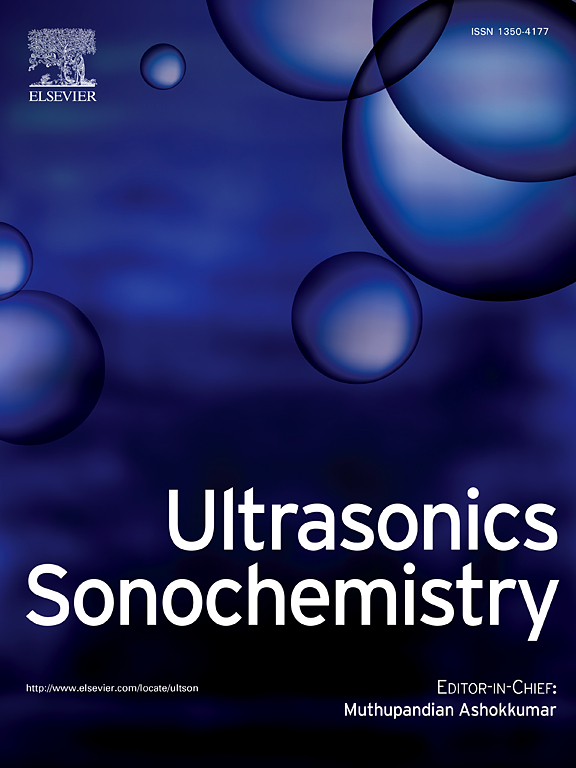Synchronized acoustic emission and high-speed imaging of cavitation-induced atomization: The role of shock waves
IF 8.7
1区 化学
Q1 ACOUSTICS
引用次数: 0
Abstract
This study experimentally investigates the role of cavitation-induced shock waves in initiating and destabilizing capillary (surface) waves on a droplet surface, preceding atomization. Acoustic emissions and interfacial wave dynamics were simultaneously monitored in droplets of different liquids (water, isopropyl alcohol and glycerol), using a calibrated fiber-optic hydrophone and high-speed imaging. Spectral analysis of the hydrophone data revealed distinct subharmonic frequency peaks in the acoustic spectrum correlated with the wavelength of capillary waves, which were optically captured during the onset of atomization from the repetitive imploding bubbles. This finding provides the first direct evidence that the wavelength of the growing surface waves, which governs capillary instability resulting in droplet breakup, is linked to the periodicity of shock waves responsible for the onset of the subharmonic frequencies detected in the acoustic spectra. This work contributes to a deeper understanding of ultrasonic atomization, signifying the role of cavitation and shock waves in the atomization process.

求助全文
约1分钟内获得全文
求助全文
来源期刊

Ultrasonics Sonochemistry
化学-化学综合
CiteScore
15.80
自引率
11.90%
发文量
361
审稿时长
59 days
期刊介绍:
Ultrasonics Sonochemistry stands as a premier international journal dedicated to the publication of high-quality research articles primarily focusing on chemical reactions and reactors induced by ultrasonic waves, known as sonochemistry. Beyond chemical reactions, the journal also welcomes contributions related to cavitation-induced events and processing, including sonoluminescence, and the transformation of materials on chemical, physical, and biological levels.
Since its inception in 1994, Ultrasonics Sonochemistry has consistently maintained a top ranking in the "Acoustics" category, reflecting its esteemed reputation in the field. The journal publishes exceptional papers covering various areas of ultrasonics and sonochemistry. Its contributions are highly regarded by both academia and industry stakeholders, demonstrating its relevance and impact in advancing research and innovation.
 求助内容:
求助内容: 应助结果提醒方式:
应助结果提醒方式:


